A brief look at Maserati at Indy
By Roberto Motta
Photos Courtesy Indianapolis Motor Speedway Museum
The American racing world has many famous and prestigious races and tracks, like the 24 Hours of Daytona and 12 Hours of Sebring. But while these venues are undoubtedly rich in history, nothing compares to the one whose name immediately reminds us of the American dream. For millions of Italians, the Indianapolis 500 is truly “The Greatest Spectacle in Racing.”
The oval tracks as used in the U.S. allow the public to watch the all the cars at the same time, but have never been very popular in Europe, where fans prefer the street circuits like Monaco or the fast tracks like Monza. This is one reason why for many years, winning at Indy was the property of the cars made in the USA and the entry and win of a car manufactured in Europe, such as Peugeot, Delage, Mercedes and Maserati, always generated considerable interest.
Several Italian carmakers have tried their luck at Indy, but the only Italian car victorious at the Speedway was the Maserati 8CTF of Wilbur Shaw, known as the “Boyle Special” that managed to beat the fierce competition in both 1939 and 1940. The Maserati was named after its sponsor, Mike Boyle, who financed the effort.
Shaw and the Maserati 8CTF very nearly won a third victory in the race in 1941, and only broken wheel prevented the car from entering the name of Maserati once again the winners circle.
In the annals Indy 500 history, the Maserati name appears for the first time in 1930, when two Type 26Bs, driven by Baconin Borzacchini and Letterio Cucinatta were entered for the event. Borzacchini, whose car sported a “twin eight” engine, retired early but Cucinatto is listed with a twelfth place overall at 15 laps down from the Summer Miller of Billy Arnold.
Years pass and in 1937, American “Babe” Stapp entered with one of the four V8 Maseratis built in 1935. Maserati called it the V8RI, Stapp called it the ‘Topping Special’ . This car was not successful and clutch failure forced it to retire, allowing this driver to finish only 31st place overall. For lovers of statistics, Stapp competed 12 times at Indianapolis, and got his best finish, fifth place in 1939 behind the wheel of an Alfa Romeo: it was also that year in which the Maserati 8CTF got its first win.
The 8-cylinder had a fixed head, which completed the acronym 8CTF: 8 Cilindri, Testa Fissa. The Maserati brothers had chosen a three-liter supercharged engine, to conform to the new European Grand Prix Formula from 1938-1940, and it was a mechanical configuration with which Maserati had accumulated considerable experience.
The engine was an 8-cylinder, mounted longitudinally in front combining two four cylinder cast iron cylinder blocks, and was characterized by with a bore and stroke of 69.0 mm (2.7 in) and 100.0 mm (3.9 in) that gave a total displacement of 2991cc (182.5 cu in). The engine took advantage of a DOHC type distribution and two valves per cylinder. With 6.5:1 compression, powered by 2 Memini MA12 carburetors, one for each group of four cylinders, two compressors and Roots, was capable of delivering 365 hp at 6300 rpm and pushed the car up to the maximum speed of 290 km/h/ or 180 mph. The engine was coupled to a 4-speed + reverse transmission.
The car had an aluminum body, had a tank capacity of 150 liters and weighed 780 kg, with a wheelbase of 2720mm, a length of 4100mm and 1520mm wide.
The 8CTF had a beautifully crafted chassis comprising two longitudinal members with cross sections of steel reinforcement. Front suspension was with torsion bars, friction dampers and stabilizer bar. At the rear suspension used semi elliptic springs, hydraulic shock absorbers and stabilizer bar.
The braking system was composed of large diameter drum brakes with mechanical control. The 8CTF rested on spoked wheels that allowed the installation of tires Pirelli front of 5.50 x19 “or 6.00×19 and 6.50×19 rear.
The first two examples of the new 8CTF, frames 3030 and 3031, were ready for the Grand Prix of Tripoli of 1938, the second round of the championship. Count Trossi managed to win the second row of the grid. At the start Trossi took the lead but unfortunately, he had a gearbox problem and was forced to retire.
In the following months, the 8CTF participated in other competitions in Europe and was almost as fast as the might of the German teams: Paul Pietsch finished third at the German Grand Prix, but the new car showed few other remarkable results due to problems with the brakes and engine. But hoping for a new source of financing, the Maserati brothers prepared the third and final frame of the Maserati 8CTF, chassis 3032.
Back in the U.S.A., during the same period, Michael J. Boyle, known as “Umbrella Mike”, and the boss of the largest union in Chicago, decided to buy a new car to be driven by Wilbur Shaw for the Indy 500.
Boyle realized that his old Miller could not support a further increase in performance and was impressed by the Maserati 6CM he had purchased in 1938. Furthermore, he believed that the engine of the Maserati 8CTF, had no reliability problems, and would do very well at Indy using the much less aggressive methanol than the dynamite fuel blends used in European competitions.
After these considerations, Boyle sent his chief mechanic Harry “Cotton” Henning to Bologna to formalize the purchase of 8CTF 3032 plus a spare engine. Returning to the U.S. “Cotton” subjected the car to a careful development in view of the Indy race. Supported by an exceptional team of mechanics, he managed to prepare the 8CTF to provide both reliability and power.
On May 30, 1939 the 8CTF driven by Wilbur Shaw and identified by the number two, (Shaw had already one at Indy in 1937 with the Gilmore Special) started from third position with a qualifying speed of 128.977 mph. During the race, the 8CTF faced a long struggle with the Miller-Offenhauser Ford of Cliff Bergere. Then, after 4 hours 20 minutes and 47 seconds the Maserati was able to take the lead and checkered flag, ahead of the Adams-Sparks led by Jimmy Snyder and Miller-Offenhauser Ford Cliff Bergere, becoming the first Italian car to win at Indy.
The Maserati 8CTF ended the race with an average of 115,035 mph, and Shaw won $27, 375. Wilbur was so happy with his 8CTF he had himself photographed in his car, and sent the photograph with the inscription: “For the Maserati brothers, for having built a car so beautiful,” to Bologna.
The following year 8CTF was deployed again to race in the Indy 500. Characterized by number 1 this time and driven again by Shaw, it started from second position on the grid with a qualifying speed of 127. 065 mph. The race was slowed by rain, and the drivers covered the last 50 laps ‘under caution’. The Maserati came in first, winning the race at an average of 114.277 mph and gave its driver a prize pool of $ 30,725.
In doing so, Shaw became the first driver to win three victories in just four years at Indy. Shaw and the 8CTF was heading for his fourth Indy victory when the wheel broke, and the car retired.
Shaw wasn’t the only driver with a Maserati in 1940, Raoul Riganti took one of two 8CLs to Indy but crashed. The 8CL had four valves per cylinder, a longer wheelbase and developed more power than the 8CTF.
The remaining two 8CTFs, 3031 and 3030 were also brought into the U.S. by Lucille Schell for drivers Rene Dreyfus and Rene Le Begue, right before the war, but did not fare as well. The Maserati 8CTFs and the 8CLs continued to compete even in the ’50s, until 1954, when they failed to qualify. Despite their long career, the three Maserati 8TCF, frames 3030, 3031 and 3032, have survived to this day.
In 1950, Maserati constructed two new Indianapolis entries, called the 8CTF/50. Stay tuned to VeloceToday to find out more about these two mystery Maseratis, Wilbur Shaw and Mike Boyle.
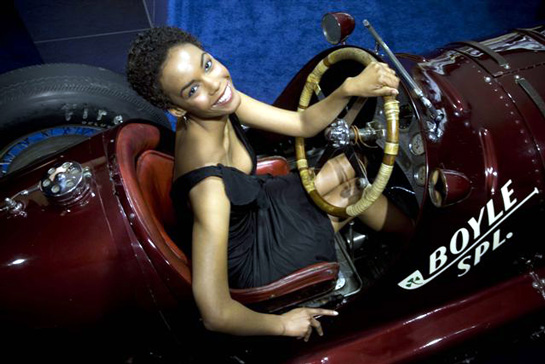
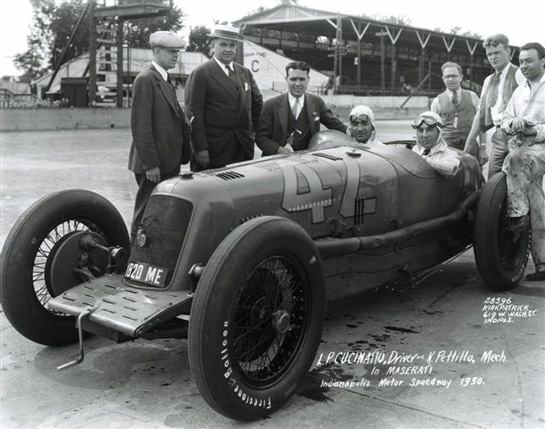
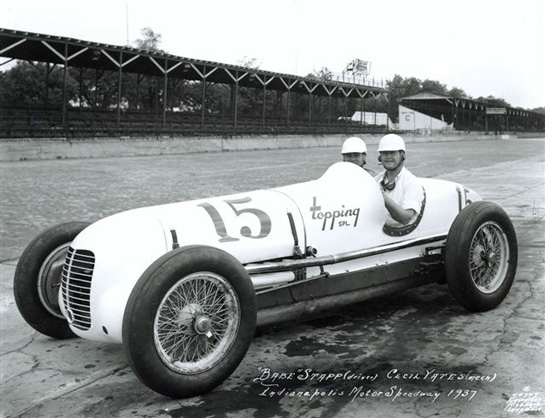
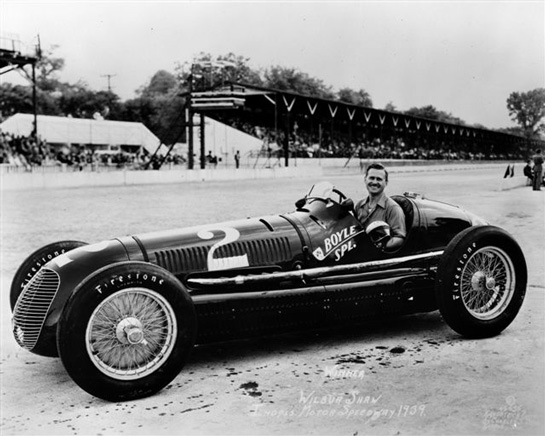
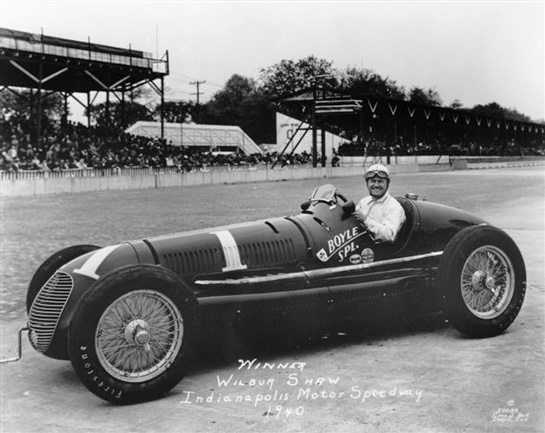
Maserati should relaunch its brand with emphasis on its many successes in US races featuring Indy, Sebring, Daytona and, perhaps, other venues.
I have the 1935 Maserati V8-RI #4502 that was driven by Deacon Litz in the 1939 Indy 500. This Maserati was imported to enter the 1937 Vanderbilt Cup race. When the entrant Enzo Fiermonte was too slow in practice he let Wilbur Shaw drive it in the race. Shaw finished 8th, even as the car was falling apart on the track. After seeing the performance potential of the Maserati Shaw convinced Boyl to get a new one for the Indy 500, and that started the rest of the story.
There are more than a few errors in Roberto Motta’s ‘Maserati at Indianapolis’ piece.I will confine myself to the Italian firm’s first appearance in 1930 with the W4. This car, essentially a Tipo 26B with two engines, had been dreamed up by Alfieri Maserati in the autumn of 1928 in his characteristic pursuit of more power from existing motors, the firm not having enough cash to engage in radical, long term innovations. The idea probably derived from the U16 Bugatti, a 3.6 litre twin crankshaft racing engine that never raced.
The W4 is better described as a twin-eight than a V16, since it consisted of two, 2-litre engines side by side, their cranks geared together and at an angle to each other on a common crankcase. Its capacity was 3961 cc and developed enough power to win the Class C World 10 Km record at Cremona in July 1929 at a speed of 152.9 mph. Yet at Indianapolis in 1930 it barely qualified in the hands of Borzachini, who managed just 95.2 mph.
This car was the only W4 in the race. Alfieri and Ernesto Maserati were its entrants and Borzachini its driver. Cucinotta, referred to by Motta as entering a second 16 cylinder car in fact drove his own Tipo 26B, completing 185 laps to finish 12th.
The failure of the W4, which retired on lap 7, was hardly surprising, since it had been forced to run without its superchargers. The 1930 Brickyard 500 mile race ran under ill considered new regulation, one of which banned superchargers. This turned the W4 into Sampson without his hair. Its 280 hp evaporated, and matters were made worse by the reckless re introduction of riding mechanics. Borzachini’s
partner, James Rossi, was no heavyweight, but an added burden, nevertheless. From a maximum speed of 161 mph at Cremona the car was reduced to 95 mph in America. And the organizers had invited Maserati to send the car, though without telling him aboiut the rules changes until too late.
We agree with Nigel–the problem was with my trying to make a long story short, plus the fact that I personally was not aware that the two Maserati entries that year had different engines. [Ed.]
The Cuiconetta picture certainly does not show the car before the start. If you notice, the stands are empty.
Also, Shaw’s 3032 was run in the Italian Grand Prix in 1938 by the factory. It was not sold new to Shaw.
Pietch’s 3rd in Germany was in June 1939, more than a year after the car made its debut at Tripoli in 1938.
The Shaw car was one of the most successful in Indy history.
1939 1st
1940 1st
1941 Ret.
1946 3rd
1947 3rd
1948 4th
The INDY 500 has been ruined for years by splits & inbread / infighting. In recent years INDY has been nothing but a Japan KIT car series. Jim Kimberly invited me to Indy in 1981,a few weeks before I raced at LeMans in my TIDE ferrari 512BBLM ser # 31589 to 5th O.A. first in IMSA class.[TIDE- ch pozzi ferrari france.] Betty McMahon [her horse Majestic Prince won the Kentucky Derby, 1969] & Jim Kimberly sponsored TIDE ferrari racing, Palm Beach rather than sponsor a polo team that year. Indy was terrific those yeras, numerous unual set ups,motors,tires with a vast number of American auto related sponsors. Ferrari racer Jim Kimberly brought the FIRST rear engined car to Indy in 1961[?] for a cost of $ 50,000. Terrific to see so many high calliaber drivers, including the LADIES. Indy needs major TV TIME for ALL its RACES!
Jim Kimberly invited me to Indy in 1981,a few weeks before I raced at LeMans in my TIDE ferrari 512BBLM ser # 31589 to 5th O.A. first in IMSA class.
Funny I was at that race and even took a couple of pics of the #47 but I don’t recall seeing your name in the programme, entry list or any official results, your web profile shows you were entered at the Datona 24 hours in ’82 where the car appears to have been a start and park, no time set in practice and with your Belgian team mate recording the only timed lap before retiring.
At Sebring in ’83 you failed to start and in ’84 at Sebring the car finsihed 23rd having failed to set a time in practice which is academic because you are listed as a DNS driver. So not withstanding a lap of two of practice did you find the car to your liking ?
The name of ’33 maserati driver at Indianapolis was wrong in the photo, he was my grandpa and I saw that photo many times.
The name is “Letterio Cucinotta” instead of “Cucinatto”.
http://en.wikipedia.org/wiki/Letterio_Cucinotta
Fabrizio; Correction made, thank you!
Fred Puhn, regarding your ownership of the ’35 Maserati driven by Deacon Litz in the ’39 Indy 500: I have a ’32 Packard 900 Sedan that came from Altoona, PA that I am told was once owned by Deacon Litz. Do you have any information on Deacon Litz that can help me confirm he once owned such a car?
Art Tideso, raced with my own money, no sponsors, OWNED 2 cars. Note my TIDE ferrari Racing classic TIDE decal on front fenders next to tire decal. The 82 Daytona 24 , finished 3 rd in 27 car qualifying 10 lap race as 91 cars were entered. Bozo rent a rider Bernard DeDriver, blew the 512BBLM motor on the second lap, check bounced/ view 70 pictures taken by Palm Beach photographer Lucien Capehard Studios of my ferrari & TIDE pozzi ferrari France team @ http://www.palmbeachTIDEmuseum.com
Anna Marshall yachts, Maureen DeAngles,Esq. tom I. davis enterprises. We are STILL the last ferrari to win class & finish in top 5 at LeMans. T.I.D.E. pozzi ferrari France 5th. O.A. IMSA class winner 512 BBLM #31589. YOUNGEST team & car OWNER to WIN CLASS at LeMans & FINISH in TOP 5 since 1923 !!! This my 54th. year of racing hydroplanes [1960-1972] sportcars 1973-2020. Still buying green bananas !!! How about you ???